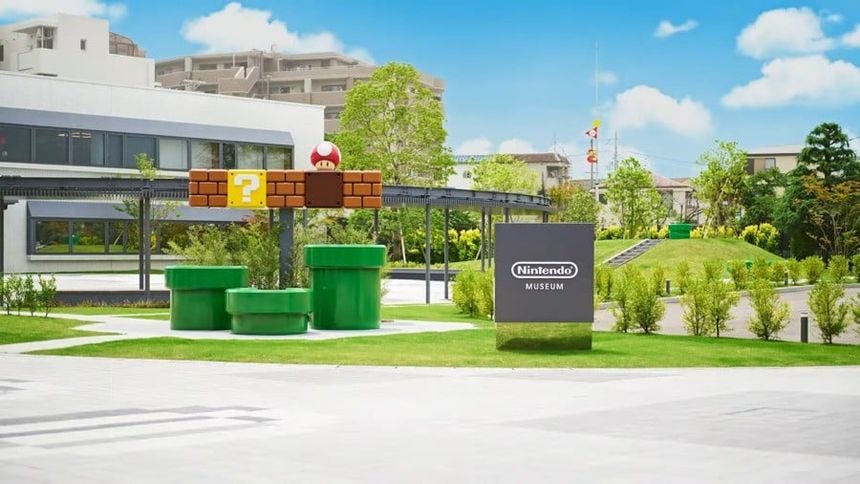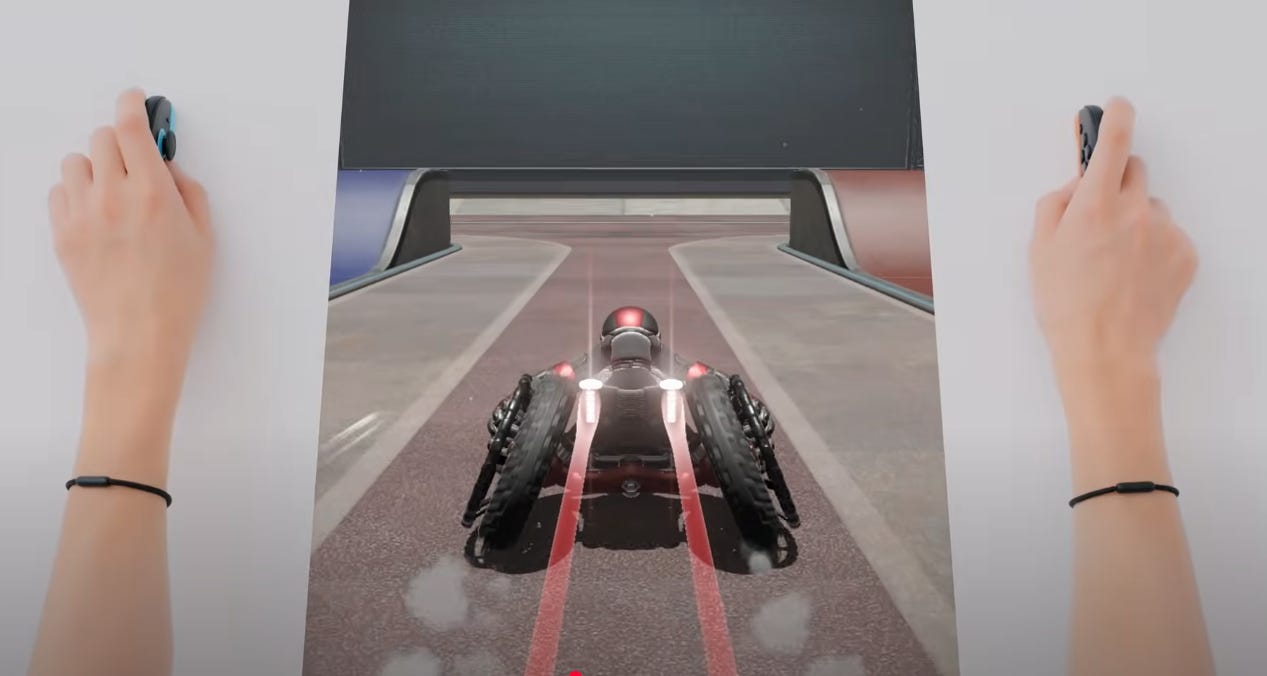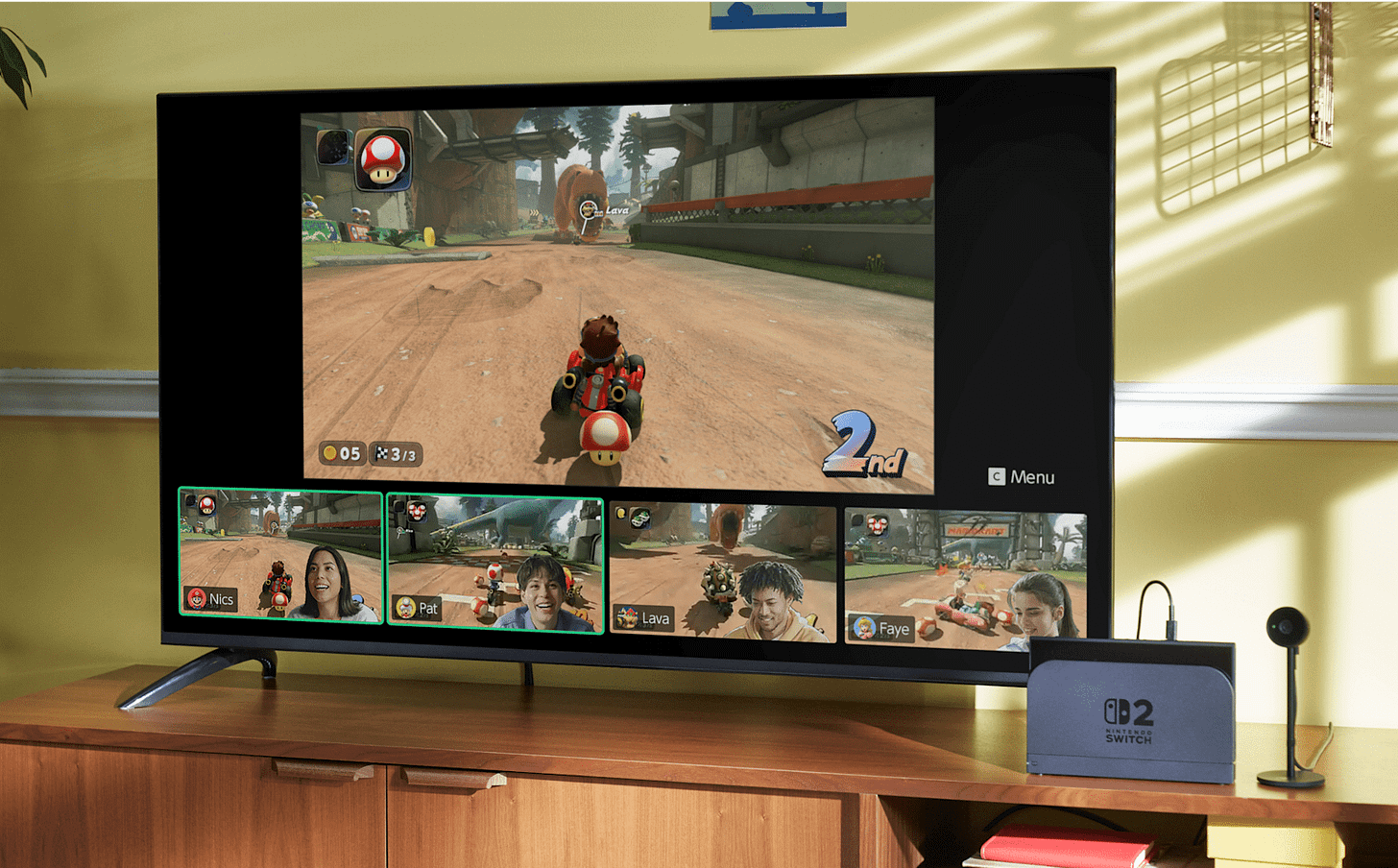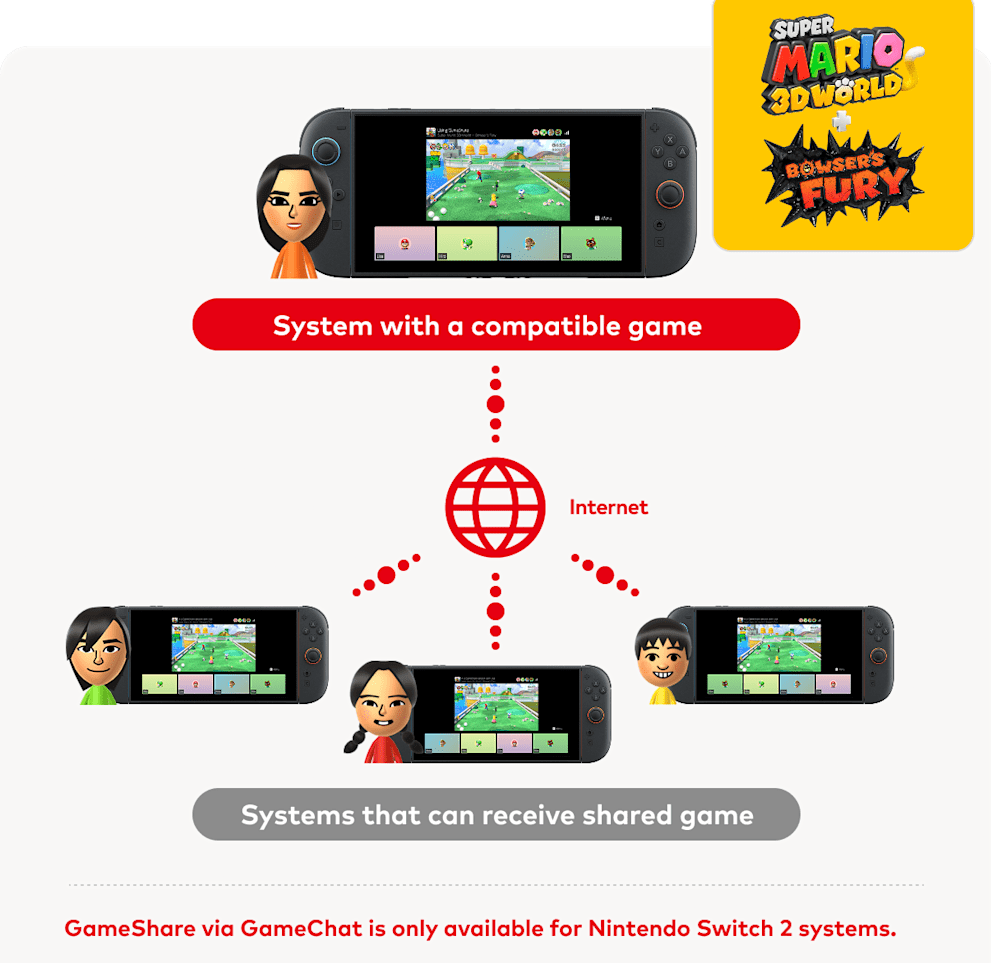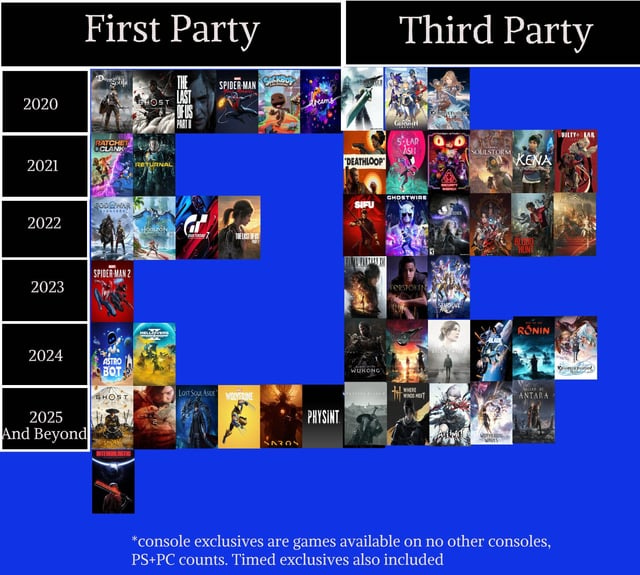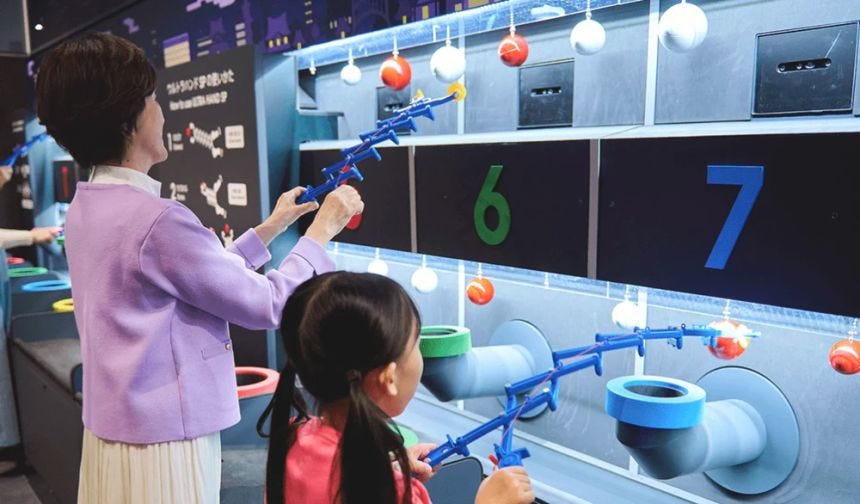Nintendo is a Live Organization that turns Gimmicks into Innovations.
The second release in a series discussing live players in markets & governments.
The Nintendo Switch 2 Direct was released today, so I decided there would be no better time to explain why Nintendo is a live organization in the videogame world. Nintendo Directs are livestreams of Nintendo announcements that happen periodically. The most recent one before today was on March 27th and was the last Direct for the Nintendo Switch. The Switch 2 Direct had a slew of announcements that support the fact that Nintendo will remain a live organization.
Their first reveal was of Mario Kart World, the ninth in the series of Mario Kart games, with more characters, driving styles, and two new modes (Knockout & an Open World mode). Mario Kart 8 Deluxe was the most popular Switch 1 game, selling 68 million copies as of Dec. 31st, 2024, so it follows that MKW would be a first highlight. Nintendo then released more information about the console itself, which came with a lot of new features, some new to Nintendo and some new to console gaming as a whole. To summarize in a list:
Mouse Mode
GameChat and a Camera
Gameshare & DLC Upgrade Titles
Increased Performance & Hardware
Mouse mode is a new way to use the Joy-Con 2 controllers. When turned on their side, they can be used like a computer mouse. This is a completely new way to use already unique controllers. Nintendo highlighted ways to use it in games with Drag x Drive, a wheelchair basketball game (pictured below), and Metroid Prime, where one controller is used to move and the mouse one is used to aim. This new controller mechanic means that Nintendo is continuing to innovate the way people can play video games, keeping it ahead of its competitors, Microsoft & Sony.
The Switch 2 will also feature GameChat, a voice and video chat integration allowing users to call their friends and screenshare their gameplay. Xbox & PlayStation users have been using voice chat since the early generations of their consoles, but this is new for Nintendo. There was a mobile app that allowed voice chat for a few select games, but it was poorly integrated and was not popular.
The decision to also include a camera is not brand-new; it was done a while ago with the Xbox Kinect, but not by Nintendo for game chat. Nintendo reintroducing it at a time when software like Discord, FaceTime, Zoom/Google Meet are all widely used is probably a good bet if it doesn't lag out every call. This is an unexpected development, and I am curious how well it will be implemented when people review it. To make GameChat possible for all Switch owners, the console has a built-in microphone that can apparently pick up audio from the couch, as well as cancel out background noise. Other companies are not doing this and even Xbox/PS do not provide a microphone, so this is another first for Nintendo.
The next notable announcement was for the GameShare feature, which allows 4 people to play online and in person, each with a different system, even when only one person owns the game. GameShare via the Internet/GameChat is only available for Switch 2 owners, while local GameShare is available for Switch 1 & 2 users. Sharing games on Xbox is a possibility by setting one's "Home Xbox" to a system that has more games than yours, but it is limited and probably a breach of some TOS. PlayStation has a similar feature, but both of these require you to trust the person you are sharing your games with.
This is yet another feature that Nintendo is implementing for the first time. Nintendo is a company that cares deeply about the user experience. It wants people playing Nintendo games to have a good time, and this GameShare feature makes playing games with friends much more accessible and affordable. I think this will be very popular; what won't be popular is the new price tags Nintendo has on its products. The Nintendo Switch 2 retails for $450, and Nintendo is selling it bundled with a digital copy of Mario Kart World for $500. This is a $150 increase from the original Switch's price of $300. Mario Kart World alone will cost $80 MSRP. The console's increased performance and new features may help justify this new price. The new hardware specs are amazing for a hybrid console the size of a tablet. Nintendo announced 120fps for certain games, 1080p HDR, a cooling fan built into the dock, and an upgrade from a 6.2" to a 7.9" screen, all without changing the thickness of the device. Nintendo was lacking in the hardware department, with games like Fortnite and Overwatch really struggling to run on the system. These upgrades were necessary to accommodate increasingly demanding games that leverage advancements in graphics technology.
But Switch 1's performance shortcomings did not hurt its sales because of its vast library of console exclusives. Choosing a console used to be all about exclusive titles. Now, Nintendo is the only console with exclusive titles. The top 24 best-selling games on the Switch were Nintendo-exclusive, with Stardew Valley at 25. Nintendo completely dominates at creating unique IPs and coming out with new characters and games to release. The last game announced was a new Donkey Kong game titled Donkey Kong Bonanza. With PC gaming growing so much in recent years, almost every Xbox/PS game is available to play on PC. Most console exclusives arrive on PC within a year or two.
PlayStation really struggled with this, having so few games available only on its system. The above chart has a footnote that PC games are included and "timed exclusives," which means they were only exclusive to PS for a period of time. Nintendo's ability to craft new stories and successfully innovate its hardware gaming technology is what sets it apart from competitors and what helped it sell so many units. The chart below shows how well each console sold in the months after launch, with Nintendo at the top for the majority of months and Xbox lagging behind. The chart is slightly dated, but it is hard to fairly compare launches as the Switch isn't following the other consoles' release schedules.
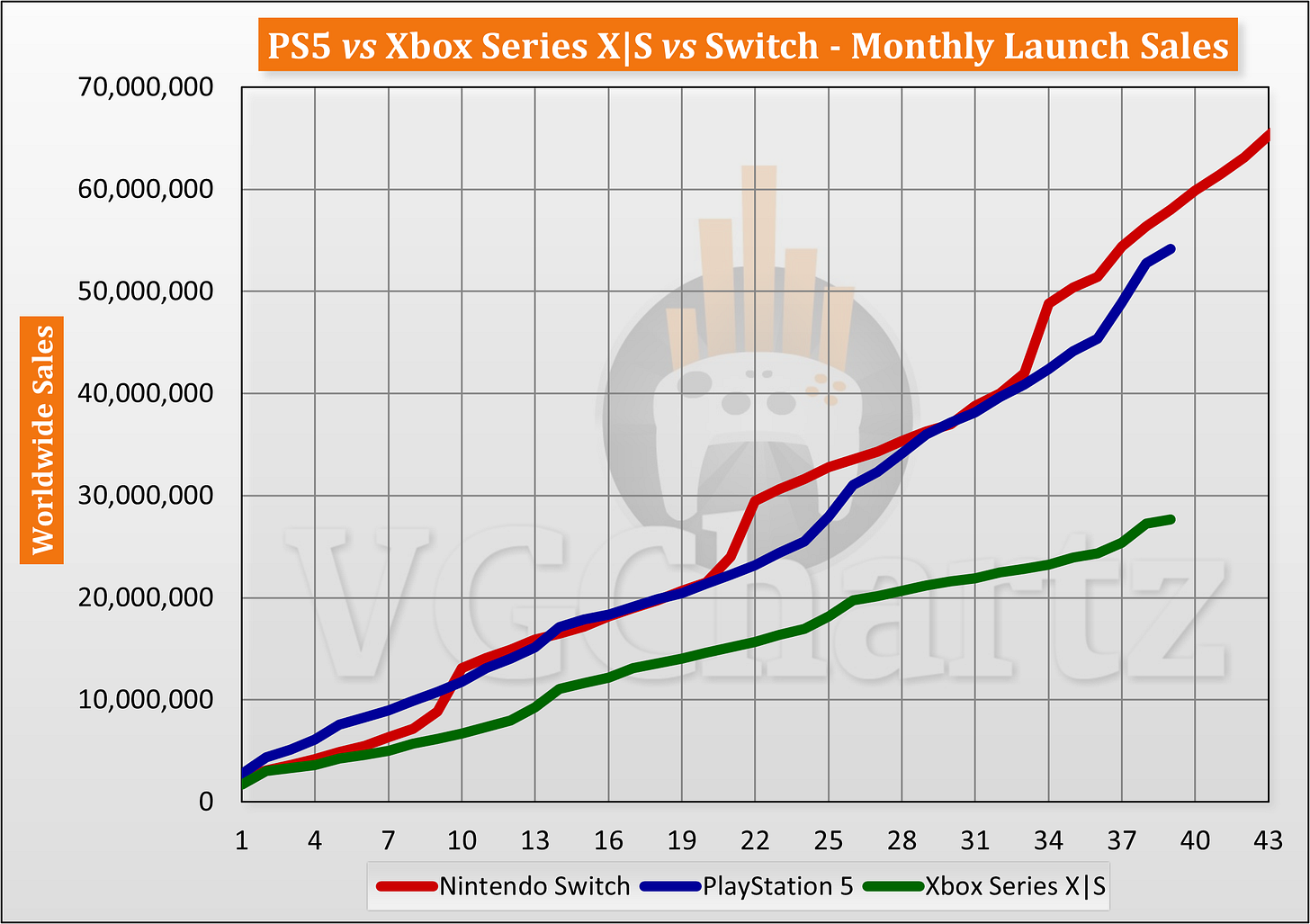
But Nintendo doesn't have to follow their schedules or copy their hardware requirements; Nintendo opted out of the console wars and focused on expanding its own intellectual properties, creating new ways to play with the docking mechanism and JoyCon controllers. Nintendo is continuing with this successful path of building its own ecosystem of games and hardware. This isn't a new formula because it has been working. The Switch was wildly popular, so Nintendo made another. The Wii was wildly popular, so Nintendo made another. But it works the other way too. When Nintendo has a console that isn't particularly popular, like the N64 or GameCube, it does something different for the next generation. This strategy is so different from Sony and Microsoft, which make the same console every generation with better graphics & performance. This is not indicative of live player decision-making, and Nintendo's constant trailblazing is what makes it so unique.
Beyond Switch 2 announcements and console strategies, Nintendo has been building in-person experiences, mobile apps, and odd products that also set it apart from the other gaming giants. Below is a picture from the Nintendo Museum which opened on October 2nd of 2024. Chock-full of old Nintendo history, products, merchandise, and game development materials from its archive, the museum is a great tribute to the company's many years of making people smile. Nintendo has theme parks in Japan and California called Super Nintendo World as well as retail locations in New York and San Francisco.
The company recently released Nintendo Today, a mobile app that serves daily updates from Nintendo, including news about the Nintendo Switch 2, game information, videos, and comics. It also launched Nintendo Music, a music-streaming software exclusive to Nintendo Switch Online members. The platform allows people to listen to music from Nintendo games, as the music is very commonly removed from sites like YouTube for copyright reasons. On top of these two apps, Nintendo is now selling an alarm clock called Alarmo for $100. The Alarmo clock has Nintendo themes and plays special sounds from games to wake you up.
All of these products are random and weird and can even be boiled down to gimmicks. But that is what makes Nintendo Nintendo: its willingness to make gimmicks. Everything was a gimmick at one point. Electric Vehicles were seen as expensive toys, but now they are all over China and are becoming more common in the United States. Most innovations could be called gimmicky early in their life cycles, and a lot of Nintendo products could be called gimmicks. The printers for GameBoys are a good example of an actual gimmick, but many of these turn into innovations. 3DS screens made some 3D games play very differently, Wii Balance boards had many people using their Wiis to get exercise and track their fitness, and detachable controllers allowed people to use their console in handheld mode and play it on the TV. I almost forgot to mention The Super Mario Bros. Movie that became the second-highest-grossing animated film of all time. The film grossed $1.36 billion off of a $100 million budget. This movie may never have happened without a gimmick movie, the original Super Mario Bros. film from 1993, which was a total failure. Nintendo still experiments, learns from failures, and uses that knowledge to succeed ten times over when other companies would never dare, and that's why it is such a powerful company today.
Thank you for reading my second article. I hope you enjoyed it. I promise the next one will not be about videogames, even though I enjoyed writing this one. Follow me on X at @oceanistmatthew and subscribe to my Substack below for announcements when I post new writing.
P.S. I found it interesting that new US tariffs were launched on the same day as the Switch 2 Direct, and unfortunately for Nintendo, some of their new manufacturing was set up in Vietnam(46%) which sees similar tariffs than China(50%). Womp womp.1




